Top Non Dairy Calcium Rich Foods to Add to Your Daily Diet
By Dr. Malavika Athavale +2 more

Get,

to manage your symptom
Get your,


4 Cr+ families
benefitted

OTP sent to 9988776655



You’ve successfully subscribed to receive
doctor-approved tips on
Whatsapp

Get ready to feel your best.

Hi There,
Download the PharmEasy App now!!


Register to Avail the Offer
Send OTPBy continuing, you agree with our Privacy Policy and Terms and Conditions

Hi There,
Sign up on PharmEasy now!!
Trusted by 4 crore+ families

OTP sent to 9988776655



You have unlocked 25% off on medicines




Code: NU25
By Dr. Malavika Athavale +2 more
Table of Contents
Calcium is a key mineral required by the body for several purposes. It keeps our bones strong, helps muscles work and supports nerve signals and blood clotting1. A lot of food items are rich in calcium. These include dairy products, and some fruits and vegetables. Yet some people may find it hard to get enough calcium because of their dietary choices. This article will give you information about calcium-rich fruits and non-dairy and vegan options that can be easily included in your diet. It will also guide you on how to improve calcium absorption and use calcium best. So let’s go ahead.
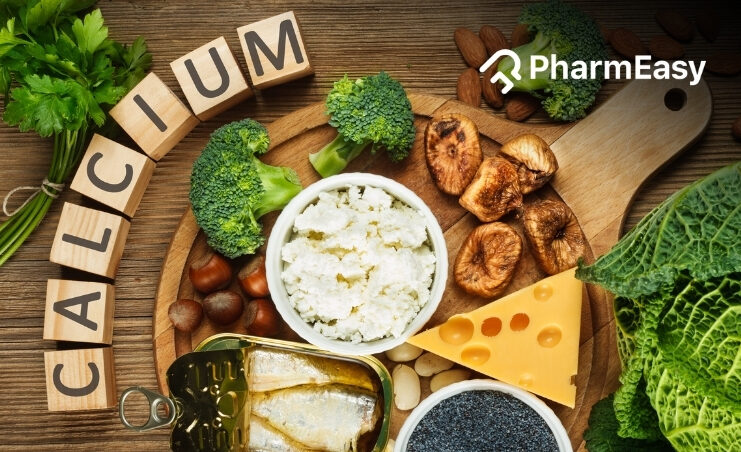
Did you know?
In the section below we have discussed the importance of calcium for our body:
Lack of calcium can lead to serious health problems. These include osteoporosis, rickets, dental issues, and other illnesses.
Fruits are a tasty and nutrient-rich dietary option. Most fruits are packed with vitamins, minerals, and antioxidants. Some fruits which have the highest calcium content are discussed below.

Dried figs have a lot of calcium. Just 2 figs(38 grams) have 55 mg2. They give you a sweet chewy way to get the calcium you need. You can snack on them or use them in smoothies and desserts.

Oranges have a lot of health benefits. One of these benefits is 7 mg of calcium per 131 grams (1 orange, whole and without peel and seeds). 1 cup orange juice (249g) provides 27 grams of calcium2. Oranges can be consumed as whole fruit or juice and it gives punch to a lot of salad and desert dishes.

Rhubarb may taste unique, but it gives you plenty of calcium. For example, one cup (240 g) has 348 mg of calcium2. You can drink the juice or use rhubarb in desserts, such as pies or crumbles.

Blackcurrants are small berries full of flavour. A single cup (112 grams) contains an impressive 62 mg of calcium3. They also have vital nutrients like vitamins C and K. That’s why they’re a great addition to what you eat.

Kiwifruits are not only delicious but they’re also filled with vitamin C and other important nutrients. A single serving (1 cup, 76 grams) provides 20 mg of calcium, which makes kiwifruit a great source of this essential mineral2. Enjoy it as is or blend it into smoothies, juices, or yogurt bowls.

Prunes may be small, but they offer a lot of calcium. 1 cup Prune juice (256g) has 31 mg of calcium in a glass2. Eating whole prunes will give you more fibre. You can use prunes in snacks, desserts, or juices.

Dates may be tiny and sweet, but they are loaded with calcium. One cup (178 grams) of non-pitted chopped dates has 57 mg of calcium2. You can add them to smoothies, eat them as a snack, or use them as a natural sweetener in baked goods.

The list of calcium-rich fruits includes apricots. They contain 5 mg of calcium per 35 grams2. No matter if you like them dried or fresh, they easily fit into your diet together with other sources of calcium.

Mulberries are loaded with flavour and calcium. One cup (140 grams) contains 55 mg of the vital mineral4. You can blend them into smoothies, pour them over yogurt or oatmeal, or eat them as they are for a yummy snack.

Persimmons may not be a favourite fruit, but they deliver on taste and nutrition. A single persimmon (168 grams) offers 13.4 mg of calcium5. The sweet and tangy flavour makes them an enjoyable way to get a variety of calcium sources.

These tiny citrus fruits hide a large amount of calcium. 100 grams of kumquats contains 62 mg of it6. Their tangy and sweet flavour makes them a refreshing snack. They also work well in jams, marmalades, or cocktails.
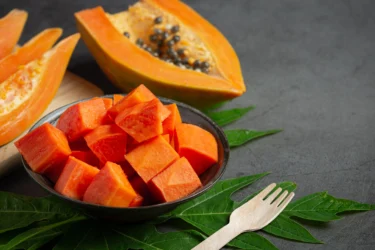
A single cup (140 grams) of papaya is packed with tropical sweetness and provides 34 mg of calcium. Papayas are also fibre-rich and filled with other nutrients. Enjoy them as whole fruit, in juice form, or include them in salads and savoury dishes.
Although fruits are a great source of calcium and other nutrients, some of them may be high in sugar as well and thus may not be suitable for diabetics. So, before incorporating them in your routine diet, always consult your doctor.
Dairy products are well-known for their calcium content. But there are many other options for vegans and for those who don’t consume dairy.
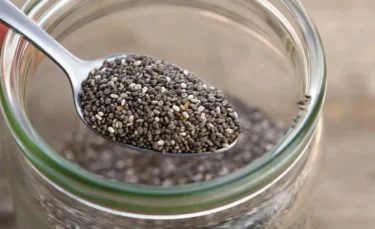
Chia seeds give you a big nutrition boost. They have 595 mg of calcium per 100 grams7. Along with this, they give you vital omega-3 fatty acids and fibre. Add chia seeds to smoothies, yogurt, oatmeal, or salads for a great nutrition boost.

Almonds make a yummy snack. They are also a rich source of non-dairy calcium. One ounce (28 grams) provides around 70 mg of Calcium2. Plus, almonds carry a lot of healthy fats, fibre, and protein. That’s why they can make your diet better and more balanced.
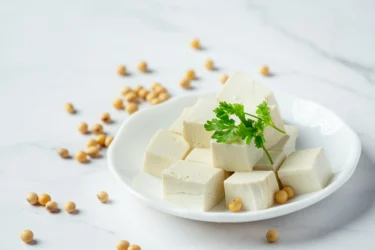
Tofu made with calcium sulphate can be a good vegan substitute for dairy products. Half a cup (120 grams) of tofu can contain 133 mg of calcium2. The final amount depends on the brand and type of tofu. But tofu is always a complete protein source. It can be added to many meals from stir-fry dishes to smoothies.
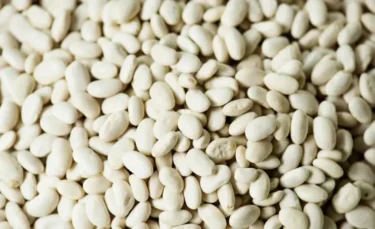
White beans offer plenty of non-dairy calcium. For instance, half a cup (100 grams) provides 236 mg8. The beans also have a lot of fibre and protein. That’s why they make a fantastic staple food in a plant-based diet.
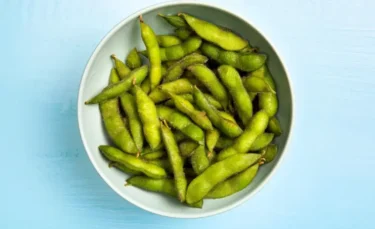
Edamame, already mentioned earlier, is packed full of calcium. One cooked cup (160 grams) provides 97.6mg calcium9. Also, these small soybeans are a complete protein source. They make a perfect addition to plant-based diets.

Leafy greens are low in calories. But they’re high in vital nutrients including calcium. Some good choices include kale, collard greens, and spinach. They all offer good amounts of calcium in a single serving.
We’ve covered diverse sources of calcium. Now we will discuss factors that affect how well the mineral is absorbed.
Here are some tips that may help you get the most calcium from your diet.
How much calcium your body needs each day depends on your age, sex, and other factors. For example, kids and teenagers are building up their bone mass to its top strength. Also, pregnant women need more calcium
Here’s a general guide to calcium needs by age group:
You can reach your daily calcium needs with a balanced diet. Be sure to add varied sources of calcium-rich foods like fruits, vegetables, dairy foods, legumes, nuts, and fish.
Also Read: When Should You Eat Fruits to Obtain the Maximum Benefits?
Knowing the signs of calcium deficiency can be very helpful. Some signs include weak or brittle nails, muscle cramps, dental issues, and a numb or tingling feeling in the fingers. If you notice these signs, it’s a good idea to ask for medical advice and look into changing your diet as needed.
Also Read: Best Vitamin D3 Rich Foods for Vegetarians
Calcium is vital for keeping bones, muscles, and nerves healthy, and also required for essential body processes like blood clotting. By including calcium-rich foods such as fruits, vegetables, legumes, nuts, and fish in your diet, you can get a good amount of this vital mineral. Also remember to maintain vitamin D, phosphorus, and magnesium levels as well. This will support your overall well-being. Stay alert for signs that you’re not getting enough calcium. And do consult your healthcare provider for advice on coming up with the best diet and lifestyle for your needs.
Also Read: Foods to Avoid if You Have Heart Palpitations
Dried figs have the most calcium among fruits. Just one cup (237 grams) gives you 300 mg of calcium.
Canned sardines and salmon top the list of foods that carry the most calcium. A 3-ounce serving (about 92 grams) gives you up to 351 mg. Collard Greens and dairy products like milk and cheese also have a lot of calcium.
A varied diet of calcium-rich foods will get you there. For instance, you can include dairy products or foods fortified with calcium, fruits, vegetables, legumes, nuts, seeds, and fish in your meals.
How well you absorb calcium depends on a few factors, including the intake of vitamin D, phosphorus, and magnesium. If you balance these nutrients well, your body can absorb calcium more effectively.
Yes, indeed. Foods like white beans, edamame, and winged beans are legumes filled with calcium. They’re a good choice if you’re vegetarian or vegan.
Disclaimer: The information provided here is for educational/awareness purposes only and is not intended to be a substitute for medical treatment by a healthcare professional and should not be relied upon to diagnose or treat any medical condition. The reader should consult a registered medical practitioner to determine the appropriateness of the information and before consuming any medication. PharmEasy does not provide any guarantee or warranty (express or implied) regarding the accuracy, adequacy, completeness, legality, reliability or usefulness of the information; and disclaims any liability arising thereof.
Links and product recommendations in the information provided here are advertisements of third-party products available on the website. PharmEasy does not make any representation on the accuracy or suitability of such products/services. Advertisements do not influence the editorial decisions or content. The information in this blog is subject to change without notice. The authors and administrators reserve the right to modify, add, or remove content without notification. It is your responsibility to review this disclaimer regularly for any changes.
Comments

Leave your comment...
You may also like
Comments